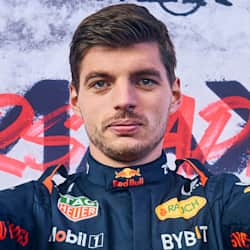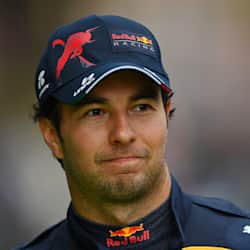Red Bull Motorsports

F1
These are the new rules for the 2024 Formula One season
The 2024 F1 season builds on the cars ushered in by the dramatic rule change of 2022. That means there’s some exciting changes on track and more going on behind the scenes.
The 2022 F1 revolution brought in a new car design that was more reliant on aerodynamics promised more wheel-to-wheel action and more overtaking accompanied by lower costs and better sustainability and, above all, close the performance gap between the big teams.
Oracle Red Bull Racing hit the tracks with the best package and Max Verstappen capitalized, taking his second and third World Championships. Last year was so emphatic, he rewrote the record book for victories, points scored and consecutive wins.
Likewise, his RB19 car is rightly recognized as one of the greatest in F1's 70+ year history. Designed by a team lead by Adrian Newey and Pierre Waché, it boasted the exploited new rules that restored aerodynamics as a key element of car design after several seasons favoring raw engine power.
Can Max and Oracle Red Bull Racing follow up with more World Championships in 2024? Or have their rivals closed the gap? Max was fastest by just over a second on Day One of testing in Bahrain so the signs are very promising.
01
How do rules affect F1 racing?
The rules are complex and precise but still result in very different approaches by teams in their car design. So it’s worth taking a step back to look at the rules in the context of the wider aims of motorsport – it’s not purely about entertainment but also developing next gen vehicles, engines, tires and fuels as well as ensuring they are sustainable, reliable and re-useable. Another aim is to expand the sport and make it even more competitive by adding more teams – so keeping costs down is essential.
With that in mind, the rules not only limit the number of new engines, tires and components available to teams but also the amount of resources they can pour into developing more: it’s all about efficiency.
Hence the freeze on engine development and the return of aerodynamics to maximize the output of the powerplant. The engines are powerful and fuel efficient but a car that can grip the road through corners will be quicker around a circuit than one that goes very fast in a straight line.
02
Race engines are frozen
Development is frozen so the teams continue with the same powerplants from 2023 with each driver having four engines for the season. But behind scenes, all eyes are looking into the future and the 2026 season that will see the introduction of a new set of F1 engines.
Red Bull Powertrains are developing their new unit with incoming Ford engine partner Ford, while Honda will move up the road to Silverstone, England, to team up with Aston Martin. And in Neuburg, Germany, Dakar Rally winners Audi will be partnering with Sauber in Hinwil, Switzerland, as they develop power units for their 2026 entry.
03
More drag reduction for increased action
One change to DRS use is that the race director can now enable DRS after one lap of racing, instead of the current two-lap grace period. This could be an advantage at a circuit like Baku with its long main straight that’s perfect for passing or it could encourage more side-by-side action following a restart after a safety car.
04
Safer cars
In 2022, Zhou Guanyu had a serious crash at the start of the British Grand Prix. The Chinese driver’s Alfa Romeo was flipped over onto its roll hoop at high speed and skidded off the track before bouncing clear of the crash barrier. Zhou was shaken but OK, thanks to the roll hoop and halo doing their jobs. The new rules beef up the loads the roll hoops need to be able to withstand to ensure all the drivers are well protected.
Watch the whole launch of the new RB20 car

Livestream
Save the date and prepare for the arrival of our 2024 Formula One challenger: the RB20.
05
New components and spare parts
While the teams have more opportunities for show runs and filming, the new rules close a potential loophole around in-season testing, stipulating that teams can’t test new components on an old car . A revised Article 10.2 C) prevents any team from running brand-new items, even including sensors and software, on an old car to try to evaluate it outside of testing restrictions.
06
Sprint Races continue to evolve
Another tweak to the Sprint Racing format means the weekend opens with a Free Practice session followed by a Sprint Race qualifying session. The next day opens with the 100km Sprint Race with the tried and trusted Quali session for the feature race, with the Grand Prix on Sunday – except in the opening two rounds which take place a day earlier with the race on Saturday.
The six Sprint Race rounds in 2024 are the Chinese, Miami, Austrian, US, Sao Paulo and Qatar Grands Prix.
Part of this story

















